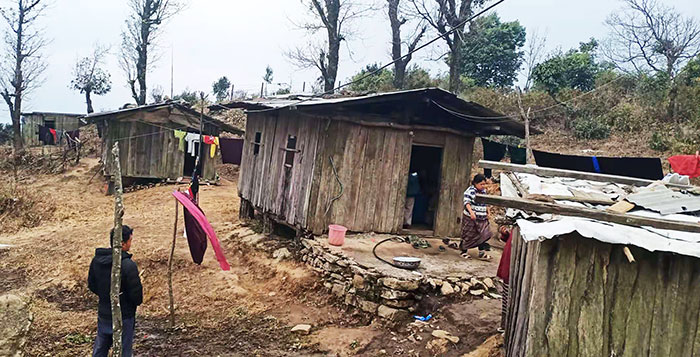Phurpa Lhamo | Wangdue
After her first journey to Jala on a cold winter morning in 1992 to construct a primary school, Nalem, 70, from Ruecheykha village spent most of her life there.
After the school construction, she stayed in Jala to educate her six children. She took shelters in various homes of local residents.
“I changed about four houses. I stayed in a ground floor of a house. Once I moved near a teacher’s residence area near the school,” Nalem said.
Today, she stays in a makeshift hut near the school with her grandchildren and great-grandchildren. “My granddaughter studied here. She is now 23 and her daughter studies here in class one.”
She is not the only one staying near the school.
There are six makeshift huts with adults taking care of children. Many of them are grandparents ensuring that the children receive a proper meal and spend time wisely at school.
Jala tshogpa, Kado, said the makeshift huts were built about four years ago. “They sought shelter in other’s houses before. We discussed and provided them space, helped them with materials to construct the structures.”
He said the huts are connected with water and electricity.
Jala PS has 57 students this year. Children from Ruecheykha and Ula come to study in the school.
While the school provides breakfast and lunch, there is no boarding facility.
Gangchum, 53, said her granddaughters study in fifth and third grade. “They’re too young to take care of themselves.”
At home in Ula, Gangchum’s daughter takes care of farming. “They do visit with ration once every two months. If they can’t visit, they send us ration in a vehicle.”
Ula is about a five-hour walk from Jala. The journey takes about two hours in motor vehicle.
“We’ll provide them education as long as they wish to study,” Gangchum said.
While elders spent months near the school for children to continue their education, Jala PS has students dropping out of school every year.
This academic session, five children left.
According to a teacher, Yonten Phuntsho, four boys became monks and a girl dropped out.
He said many boys drop out to become monks at a young age.
Tshogpa Kado said parents make the decision to send the boys to become monks. “The children are too young to decide for themselves. The parents feel that, after they become monks, the children can help in lochoes at home.”
He said by joining monastic body, children make a living when many educated ones do not find a job.
Meanwhile, the school authorities said they conduct career counselling to address the drop out issue.
“We advise them to become monk after completing class 10. We ask them to pursue monastic education after studying at Taktse, if they’re interested,” Yonten Phuntsho said.
Sources said the girl dropped out from fifth grade because of financial issues.
Her three sisters are currently studying in the school.
Tshogpa Kado said that the father was hearing impaired. “He goes around performing rimdros and earns little.”


